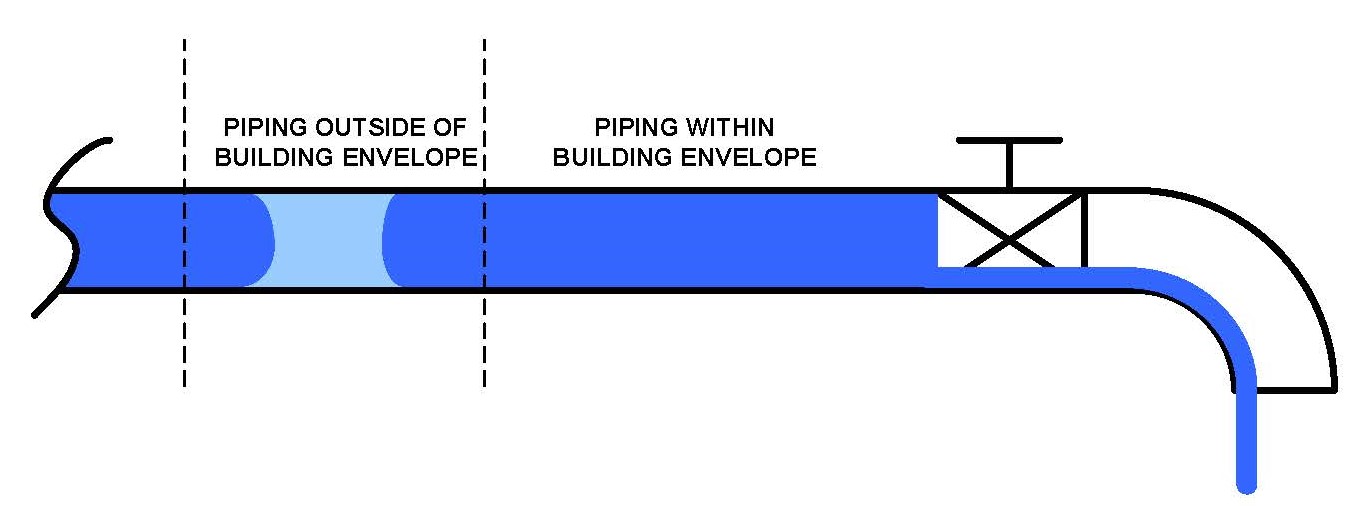Why Frozen Pipes Rupture
With winter (or frozen pipe season) upon us, I’m reminded about misconceptions regarding frozen pipes and pipe bursts that were located in a heated space. The following figures illustrate why this happens.

In Figure 1 we see a pipe routed to a faucet with a valve. A portion of the pipe is routed outside of the building envelope and therefore exposed to cold outdoor air temperatures. Areas outside of the building envelope can be crawl spaces, attics, or even piping routed in an exterior wall. The normal water pressure in this type of system would be expected to be below 100 psi.

In Figure 2 we see an ice blockage forming in the portion of the piping located outside of the building envelope. As water freezes, it expands. This expansion causes the pressure of the water between the ice blockage and the valve to increase substantially (for reference medium grade ¾ copper tubing found in typical residential applications will burst at about 3000 psi).

Leaving the valve partially open thereby allowing the faucet to drip will prevent this pressure to increase (see Figure 3). This is why people recommend to let your faucets drip while on vacation. The dripping faucet prevents the increase in pressure between the ice blockage and the valve. However, it does not prevent the water from freezing, the myth being that running water will not freeze. (think Niagara Falls in the winter)

Figure 4 shows that with the valve closed, the high pressure within the pipe can cause the pipe to rupture thereby allowing the water trapped between the ice blockage and the valve to flow out from the ruptured pipe. If the rupture is found before the ice blockage thaws the pipe can be repaired and there is minimal damage caused by the small amount of water that has been released.

However, as Figure 5 shows us, if the ice blockage thaws before the rupture is found, then water is free to flow from the ruptured pipe thereby causing water damage within the structure. This explains how piping located within a heated area can burst as the result of the piping being exposed to freezing temperatures elsewhere.

